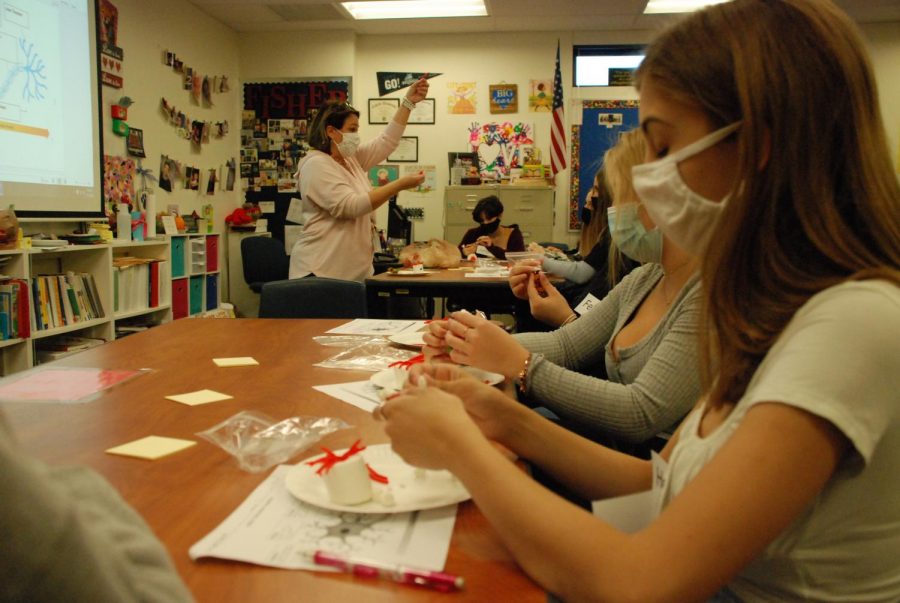Coping with COVID-19 in Early Childhood classes
Students’ experiences in Early childhood classes are drastically altered. In past years, the early childhood education classes taught at Perry included many interactive activities and projects. This year, however, the curriculum has to be taught in a different way that follows COVID-19 protocols and ensures the safety of students.
The biggest complication with the adapted routine is the question of how students’ learning will be impacted.
Early Childhood Education teacher, Victoria Fisher is adamant that students learn through play, and it is important for students to not solely learn from pencil and paper. So, how does reading articles and doing worksheets affect the students? Sophomore Samantha Hoefer said, “It’s harder to put the concepts that we’re learning into real-world situations because we can’t experience it with the kids.”
Fisher taught preschoolers for many years, so she likes to do activities in her classroom of highschoolers that would appeal to younger kids. “Students learn better, more information is taken in and cements in the brain when they are having fun and engaged in the learning process,” Fisher explained. For example, students make and play with “play-doh” in order to understand how children need fine motor skills.
Students in Early Childhood 1 typically bring home electronic babies that function as a real baby would. However this year, the students will be unable to complete this project in order to limit the spread of COVID-19 germs. “Like usually we’re given a robot baby to have an experience as to what it’s supposed to be like having a baby and what is expected from you. It allows us to go through that, in order for us to realize an infant’s needs,” sophomore Jeanette Perez stated.
Students are also unable to do group projects, because they are not allowed to move seats. Instead, students will work with the people they sit near to create a slide that will be compiled into a slideshow with all the students’ slides.
Perez’s perspective is that, “The teachers try their best to create a good learning environment in early childhood even though we are socially distanced, but it also limits some activities to help us get a better grasp of the information.” Having to listen to information rather than be a part of it has an effect on the students, biologically. Fisher emphasizes that, “Additionally, movement helps with brain flow and concentration. Sitting still and hearing lectures all day wears the brain down and kids struggle to pay attention and process the information.”
Another notable difference is that in usual years students are able to work in the daycare at Perry. However, in consideration of the health of the children in the daycare and the students, students’ involvement in the daycare has been halted. “Because of COVID, we aren’t allowed to go into childcare with the kids,” Hoefer stated.
Hopefully, as COVID-19 declines, students will be able to conduct a more normal class, but until then students and teachers have to adapt.

Sophie Barkett is a junior at Perry High. This is her second-year writing in the newspaper, and she is the Reviews/ Opinions editor. Her beats this year...




